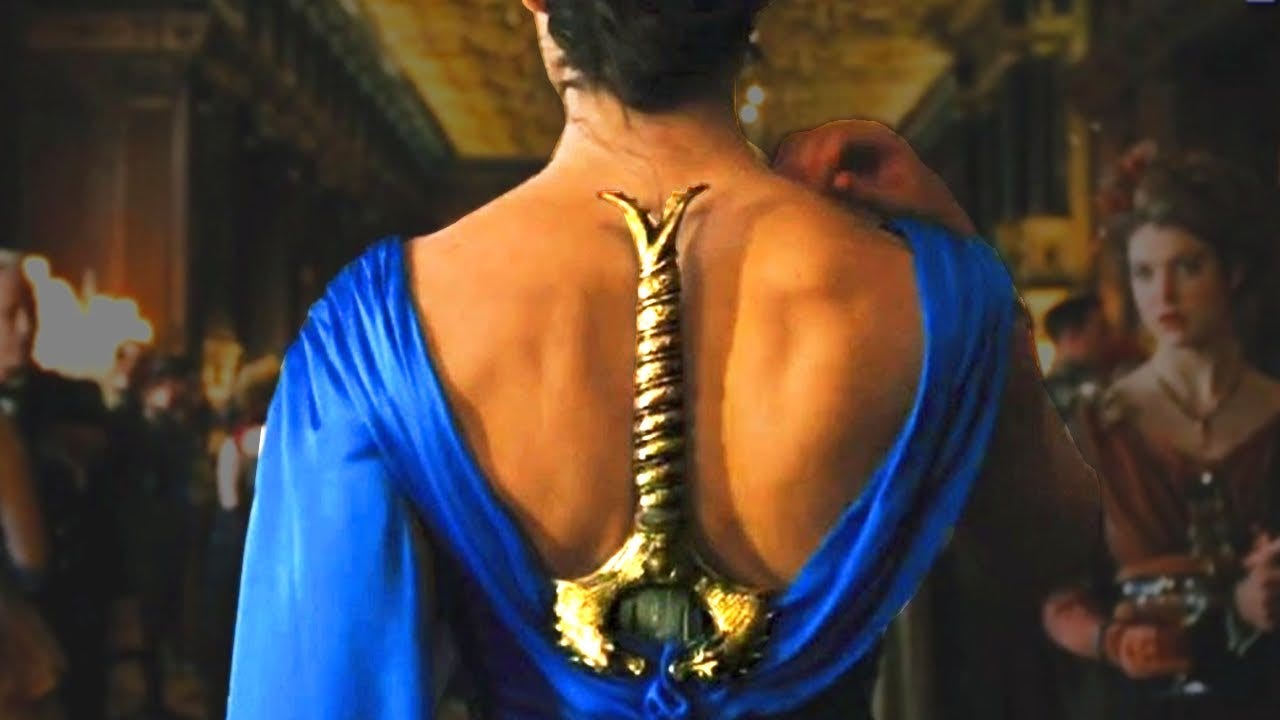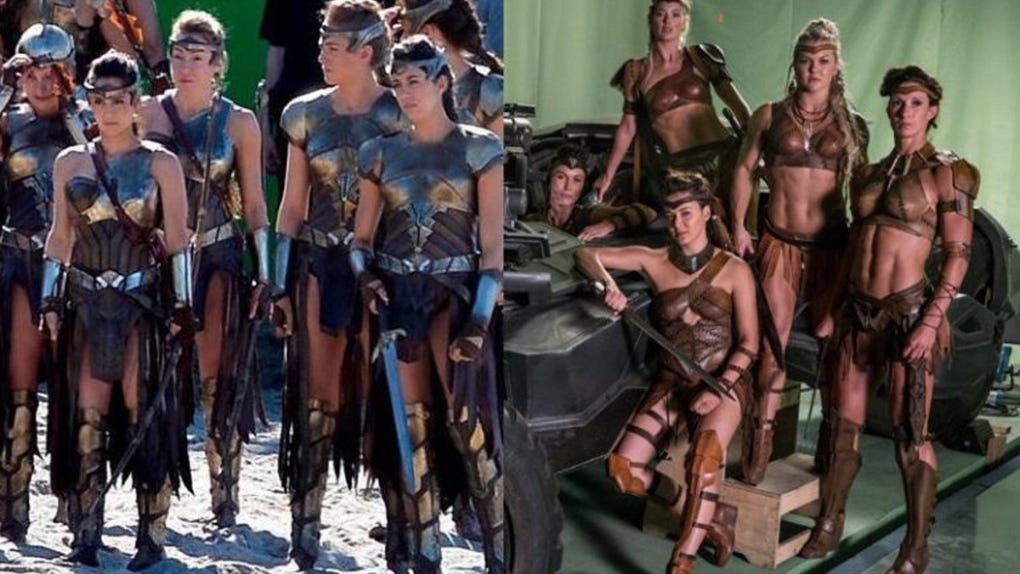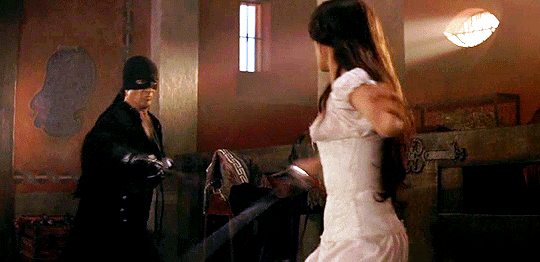Problematic Badass Female Tropes #2
The Wonder Woman
The camera pans in on a circle of five diverse women, sitting in chairs in what looks like a dingy church basement. The harsh yet dim lighting coupled with the morose expressions on the women’s faces give us a somber feeling, as one woman shushes their subdued chatter by declaring the meeting has started. She goes on to describe them as being one of the most hated groups in the world, and reminds them that they are in a safe space. Then she welcomes them by the group’s name: The Support Group For Women Who Didn’t Love The Movie Wonder Woman.
The first big laugh of this comedy sketch (by Funny or Die, right around the movie’s release) is in that introduction: the premise that women are all expected to love the 2017 movie Wonder Woman, presumably because of its centering on a female superhero as not only a central or pivotal character, but an actual protagonist. And a badass one, at that. But there are some problematic parts to this ostensibly badass female character, and we shouldn’t swallow them all whole like geese being raised for foie gras, just because she’s strong.
In the first of my Problematic Badass Female Tropes series, I discussed the distressing flip characters go through in The Marion Effect. My second trope I’ve named The Wonder Woman, mainly after the 2017 movie and its cultural and social surroundings, but like The Marion Effect, this trope hits many characters besides only her.
The Wonder Woman trope centers around a two-sided question: Does the sexiness of the ass preclude the badness of the ass? If a female character is a fighter, why must attractiveness have anything to do with her warriorship (whether hotness is shoehorned onto her, or her normally-necessary hotness is eradicated)?
The Wonder Woman Support Group sketch continues with each woman introducing herself, a-la addiction group therapy, and stating why she didn’t love the movie. One woman points out that an island populated with only ‘hot chicks’ is not progressive in the least. Another observes that Gal Gadot is thin and beautiful, and, by the way: she wears high heels, which is ridiculous, even though they’re wedge heels. Another member of the group relates how she was fired from her job at Planned Parenthood, and accused of being a woman-hater, after posting to her social media only that she didn’t think the movie lived up to the hype. Another shamefully admits she lied to her group of friends, saying she loved it, because the social pressure was just too great.

I saw Wonder Woman with a group of loudly empowered women, and I have to confess to caving in the same way the last woman did in the comedy sketch. I am a fight director, stunt performer and coordinator, and a martial artist myself, and as a warrior-badass in my real life, I have to agree with the comedic Support Group wholeheartedly. Sure, there were some fun fight scenes (albeit many with too much CGI enhancement for my professional taste), and I liked very much how the male love interest remained a supporting role to Wonder Woman, almost a sidekick or a Doctor Who companion; there on the adventure with her, but letting her be the one who gets all the action done. And his final act of self sacrifice is actually one that is more often given to the selfless woman character, so I really dug that dynamic. When the male pivotal character landed on female-only Themyscira, I was admittedly worried that now it was going to be all about him, regardless of the title of the movie. But I was happily wrong.
Just. Why do all the Amazons have to be so hot? The controversy about their outfits being rendered more skimpy, less practical in their subsequent Justice League appearance illustrates this problem well. It reminds me of the famous video game character issue, talked about in many geek culture circles: female fighters (especially in RPGs) have armor that’s little more than a bikini, nothing that actually, well, yanno, covers or protects the heart, vital organs, or in other words does anything armor is supposed to. Why? Because they’re female, and females are always sexualized. And, as Tonya, our liar in the comedy sketch, puts it in her outrage: we are all supposed to automatically love the movie “just because it’s the first female superhero movie that sees its protagonist not through a male gaze? Fuck that shit!”

James Cameron, creator of another female badass by the name of Sarah Connor, remarked about this very problem in Wonder Woman, and was summarily trashed for it. He also said that he made a point of making Sarah Connor not sexy, so that she could be strong instead. Now his statement that strong female characters shouldn’t ever be sexy is also problematic, as I’ll talk about in a minute, but you can understand where he’s coming from. He’s questioning why the added sexiness needs to be there, and asserts that it shouldn’t. He says in the Guardian article that his Sarah Connor character wasn’t there to be ogled or sexualized, but to be a central character—an action hero. Of course, watching Sarah Connor hoist her badass gun with her cut, rippling, glistening arm muscles exposed is actually hella hot, so he failed in his goals with that character anyway. Maybe that’s just my taste, but I don’t think so.
The problematic Wonder Woman trope focuses on how female warrior types (soldiers, fighters, spies-who-kick-ass like Atomic Blonde) are undermined via sexualization. Let’s call out how this is done in two particular ways: Firstly, if a warrior character is a woman, sexiness is shoehorned onto her, regardless of whether being sexy has anything to do with the story overall or with her character arc. This is what feminist scholars mean when they discuss the ‘male gaze’ (though I would adapt that phrase to be the ‘heterosexual male gaze’); the character is built to be seen through a sexual lens. She’s made to lust after, in other words.
Tonya’s outburst re: the male gaze in the sketch is funny, but I would aver it’s not really true: Wonder Woman is slender, young, beautiful, clear-and fair-skinned, and scantily clad (even in her older iterations), and her battle suit includes a corset and high heels. Of course, it’s not just the title character of the Wonder Woman trope that has this problem: Black Widow is skinny, young, beautiful, and fights in a skin-tight catsuit. Catwoman is the same, and she’s got the added bondage suggestion of her whip and claws as her favorite weapons. And even though Elena is obviously an accomplished swordfighter, her biggest fight scene is one in which she gets her dress slashed off by Zorro. I could go on, but you get the idea.
The second part of the Wonder Woman trope shoehorns sexuality onto the warrior woman in the opposite way. The other side of the problematic Wonder Woman coin can be described by Cameron’s comments: i.e.: he was trying to make his badass fighter female *not* sexy, specifically so she *can be* strong instead. This masculinizing (or de-sexualization) technique is explored in more detail in Problematic Badass Female Trope number 6: One Of The Guys, but hints of it are also found in this one. To wit: if a woman is a true fighter, she must not be hot. I can think of two characters to illustrate this, both portrayed by Gwendoline Christie.
Specifically, it’s the two characters Christie is most known for portraying in nerd culture. Both warriors, both clad (when clad for battle) in full plate armor. No boob-cups, no exposed midriffs or cleavage. Real armor. These characters are: Captain Phasma in Star Wars, and Brienne of Tarth in Game of Thrones.
Now you can argue, readers, that Captain Phasma is pretty ineffective when it comes to actual warriorship, and you wouldn’t be wrong; but she’s no more so than any other high level Star Wars stormtrooper, and she doesn’t have a special girly looking set of armor. I mean yes it’s super shiny, but that’s about her rank, not her gender. Can you imagine what the chick style of stormtrooper armor would have looked like, had we had any female stormtroopers in the trilogy of the late ‘70s & early ‘80s? Well, no, neither can I—that’s because they wouldn’t exist. But I’ll talk more about this later when I discuss Trope #6. Point is: there’s nothing about Captain Phasma’s armor that makes her sexy—it’s pretty much just like the armor the male stormtroopers wear, and she looks just as masculine as her male subordinates in it. Okay so let’s come back to Captain Phasma in PBFT #6; remember her, but put a pin in her for now.
Now about Brienne of Tarth: I don’t know about you—I find Gwendoline Christie to be gorgeous. But one is forced to admit she doesn’t fall under classic beauty standards. She’s 6’3”, with short cropped hair, and the designers of Game of Thrones kept her in non-makeup looking makeup, and forget the video game fighter bikini: she’s got full plate mail armor on, and a longsword to match her size. She’s huge, and she’s a glorious skull-basher, and nobody is sticking false eyelashes and lipstick on her, because that has nothing to do with who Brienne of Tarth is. But the one character who makes googly eyes at her is portrayed as a joke, because she is so ostentatiously presented as not what we think of as normally sexy.
Both sides of the Wonder Woman Trope are problematic: To say that it’s impossible for a warrior woman to also be pretty is just as bad as the other assumption: that a woman must be hot in order to be worth watching at all. These are the twofold issues that discussion of the dual Wonder Woman trope brings to the light of day, and though we see one problem far more often than the other (especially in Hollywood), they’re both problems of misogyny, specifically of the hyper-sexualization of women.
What the Support Group sketch satirizes quite well is an underlying insidiousness inherent in all the seven PBFTs I’ll be describing: the fact that we’re all supposed to blindly (and more importantly, silently) accept these characters as strong badasses, and if we point out the problems of systemic sexism hidden in each, we’re reviled for it: we’re called feminazis, or admonished that we’re reading too much into them, and can’t we all just relax and enjoy the fun superhero movie?
Okay, sure, we can enjoy Wonder Woman for what it is, but as I explained in the first of this series of essays, the way popular media portrays its female characters has everything to do with how our culture treats and listens to real women in real society. As long as we can point out the problems with these characters (and celebrate the rare ones without them), the hideous underpinnings of misogyny will begin to be unraveled, exposed as they then will be.
And then we can put on our tiara with the star on it, spin around and wield our lasso of truth.
In case you’d like to see the whole sketch: here ya go.




